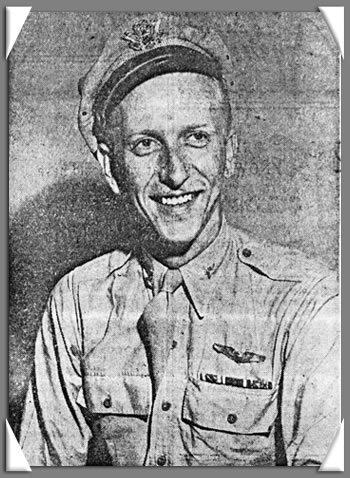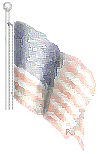Men and Women In Service.
Bruce H. Clifton, 923 27th Street, has arrived at San Antonio, Texas to begin preflight training in the army air corps. Others entering the school are Elmer L. Eilers, son of Mrs. Henrieta Eilers, 1217 Washington Avenue; William H. Sanford, son of Mr. and Mrs. L.R. Sanford, 917 S. Alice, Richard Paul Sulzbach, son of Mr. and Mrs. F. P. Sulzbach, 1706 Rebecca Street, Jess J. Tattersall, whose wife resides at 1800 Virginia Street and Howard T. Thistlewood, son of Mr. and Mrs. T.F. Thistlewood, 1801 W. Palmer Avenue.
Source: The Sioux City Journal, July 12, 1943
![]()
MEN AND WOMEN IN SERVICE.
Elmer L. Eilers, son of Mr. and Mrs. Louis Eilers, 1217 Washington avenue, and Bruce H. Clifton, son of Mr. and Mrs. Guy H. Clifton, 4115 Monroe street, have reported for duty at the Frederick Army air field, Oklahoma school for bomber pilots. It is the final nine-week course to be taken before they will awarded silver wings.
Source: The Sioux City Journal, December 21, 1943
![]()
LIEUT. CLIFTON LISTED MISSING NOW IN HOSPITAL
Two letters dated August 28, from Lieut. Bruce H. Clifton to his wife, who resides at 41 LaSalle avenue, denies the report from the War Department that he was missing in action over Romania, since August 21. Lieut. Clifton, a copilot on a B-24, told of bailing out of his plane and that he had received an ankle injury. He is now in a base hospital in Italy. Lieut. Clifton is a son of Mr. and Mrs. G. H. Clifton, 4115 Monroe street.
Source: The Sioux City Journal, September 5, 1944
![]()
IN UNIFORM
Lt. Bruce H. Clifton, whose wife resides at 41 La Salle street, has been awarded the air medal. He is a pilot of a B-24 Liberator bomber of the 15th air force in Italy. His parents, Mr. and Mrs. H. G. Clifton, reside at 4115 Monroe street.
Source: The Sioux City Journal, February 27, 1945
![]()
ESCAPE FROM UNDER NOSES OF NAZI OPPRESSORS IN YUGOSLAVIA
Sioux City Flier Was Helped to Safety by Brave Partisans.

| He wears the European theater bar with eight stars, the purple heart, the air medal with two clusters and has been recommended for the distinguished flying cross. |
Bailing out of a disable Liberator bomber a few seconds before it crashed into a mountain and landing 400 miles behind enemy lines with a broken ankle probably would provide sufficient wartime thrills for the average air force man.
But First Lt. Bruce Clifton, 41 LaSalle street, got out of Yugoslavia through the underground and completed 26 additional missions before he was sent home for release.
The last mission of all, over Lenz, was the toughest, he says. That was last April 25 over a target which already had become notorious among Allied fliers for the high concentration of anti-aircraft fire.
“Our plane was so badly shot up that day that there was scarcely a foot of surface that had not been hit,” Lt. Clifton says. “One engine was completely out of commission and another was missing badly. We picked oat bushels of flak pieces for souvenirs. It was the toughest mission I ever had.”
JUMP JUST IN TIME.
The first combat mission, which took place last August, ended when the crew bailed out at 15,000 feet to avoid a collision with a mountain. “Our plane was disabled, and there was no way of gaining sufficient altitude to clear the peaks,” the pilot says.
“The Liberator crashed just a few seconds after we bailed out, but all members of the crew reached ground safely. I had a little difficulty when I landed on a pile of jogged rocks. I fractured my right ankle and suffered other injuries.”
Yugoslav patriots appeared on the scene almost immediately and gathered up the members of the crew. Because of his injuries, Lt. Clifton had to be carried to the farm house, which was their first hiding place.
“I received medical attention almost immediately,” he says. “An attendant at a German hospital sneaked out with stolen supplies, took care of my injuries, and went back to the hospital. His disregard for his own danger was characteristic of all the people I met.”
NOT AFRAID OF DEATH
“They had suffered so much under German rule that the only thing they had left to lose was their lives—and they were not much concerned about dying. They have lived close to death for so long that they were not afraid of anything. Their attitude seems to be that they had nothing in their lives to lose and everything to gain by helping Allied fliers who landed in their county.”
The underground was so well organized and functioned so rapidly that Lt. Clifton and his crew were on their way toward allied lines a few hous after they had landed. One of the leaders of the underground and the guide for the 400-mile journey was an Egyptian, who had been educated in England.
“He was with us all the way through,” the lieutenant says, “and he knew all the tricks. Because of my broken ankle, I had to be carried or hauled in a horse ______, but there was never any mention of leaving me behind. We traveled steadily for five days.”
The end of the journey was a little airport in the mountains which Yugoslav patriots had established as a dispersal point for Allied soldiers. In addition to Lt. Clifton and his crew, there were about 50 other Allied soldiers waiting a chance to get out.
“A transport came for us that night,” the lieutenant says. “The big plane came over the mountains and made a perfect landing on the blacked out runways. It was one of the most amazing feats of navigation and flying that I have ever seen.”
The escaping fliers were loaded into the transport which took off immediately for an Allied base. Lt. Clifton was hospitalized for a month and was unable to fly for two months after he was released from the hospital.
Despite the interruptions, he completed 26 later missions before the war ended. He was sent home recently for a reunion with his wife, Ruth, and his two daughters, Janice Ann, 3, and Joan, 4 months.
Source: The Sioux City Journal, July 29, 1945
![]()
